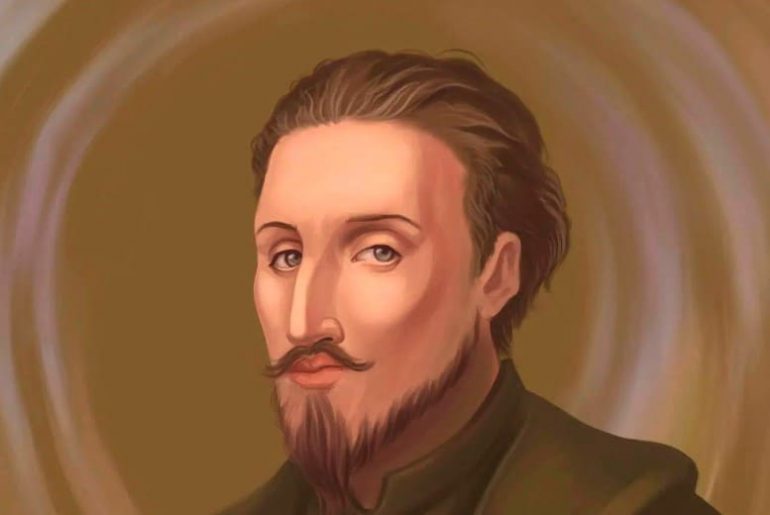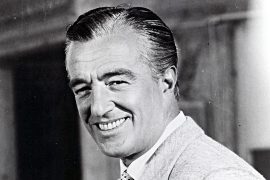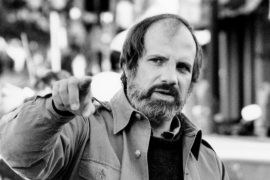Miguel de Cervantes Saavedra was a writer from Spain. He was born in 1547. His father was a nobleman who had become poor and worked as a barber and surgeon. Miguel lived in Italy for a while and also served in the Spanish fleet.
On a journey he was kidnapped by pirates from the Ottoman Empire. He was a slave for five years. Then his family bought him free. He worked in various jobs and also ended up in prison. He died of diabetes at the age of 68.
The most famous work by Miguel de Cervantes is the novel about Don Quixote. This is pronounced something like “dong ki-chote”. They say it was the world’s first proper novel. Don Quixote is a poor nobleman traveling with his servant Sancho Panza. In contrast to the clever Sancho, the unworldly Don Quixote dreams of all sorts of things and puts himself in danger. Don Quixote’s fight against windmills, which he believes to be giants, is particularly well known.
Miguel de Cervantes has long been considered the most famous writer to have written in Spanish. His great novel was a model for many others. Plays and films have been made about it. “Instituto Cervantes” is the name of the state organization that spreads the Spanish language abroad.
What is Miguel de Cervantes best known for?
Miguel de Cervantes is the most important and celebrated figure in Spanish literature. He is best known for being the author of Don Quixote (1605, 1615), a widely read literary classic. He also was noted for his short story collection Novelas exemplares (1613; Exemplary Stories) and several plays and poems.
Why did Miguel Cervantes wrote Don Quixote?
Cervantes himself states that he wrote Don Quixote in order to undermine the influence of those “vain and empty books of chivalry” as well as to provide some merry, original, and sometimes prudent material for his readers’ entertainment.
What is the summary of Don Quixote?
The plot revolves around the adventures of a member of the lowest nobility, an hidalgo from La Mancha named Alonso Quijano, who reads so many chivalric romances that he either loses or pretends to have lost his mind in order to become a knight-errant (caballero andante) to revive chivalry and serve his nation.
Where did Cervantes lose his hand?
Cervantes was aboard La Marquesa with his brother Rodrigo during the Battle of Lepanto, which took place on the 7th of October 1571. During the battle he suffered bad injuries to his left hand, partially crippling it.
Why is Don Quixote so important?
Don Quixote is considered by literary historians to be one of the most important books of all time, and it is often cited as the first modern novel. The character of Quixote became an archetype, and the word quixotic, used to mean the impractical pursuit of idealistic goals, entered common usage.
Why did Don Quixote name his horse Rocinante?
“Rocinante”, then, follows Cervantes’ pattern of using ambiguous, multivalent words, which is common throughout the novel. Rocinante’s name, then, signifies his change in status from the “old nag” of before to the “foremost” steed.
What mental illness did Don Quixote have?
Don Quixote suffered from chronic insomnia due to ruminations and worries: ‘Don Quixote did not sleep too much at all during the night, thinking about his lady Dulcinea’ (part I, ch.
What is the moral of Don Quixote?
Don Quixote teaches us that life is to be challenged. That passion and discipline of a determined soul are a foundational element of being a leader. Quixote does not accept current reality. He forces his creative imagery, his commitment, and his happiness on it.
What do horses symbolize in Don Quixote?
Horses symbolize movement and status in the novel and often denote a character’s worth or class. The pilgrims outside Barcelona, for instance, walk to the city. The noblemen ride in carriages, and the robbers and Don Quixote ride on horseback.
What does Sancho Panza symbolize?
Sancho Panza is precursor to “the sidekick,” and is symbolic of practicality over idealism. Sancho is the everyman, who, though not sharing his master’s delusional “enchantment” until late in the novel, remains his ever-faithful companion realist, and functions as the clever sidekick.
Who is Don Quixote’s imaginary lady?
Dulcinea, in full Dulcinea del Toboso, fictional character in the two-part picaresque novel Don Quixote (Part I, 1605; Part II, 1615) by Miguel de Cervantes. Aldonza Lorenzo, a sturdy Spanish peasant girl, is renamed Dulcinea by the crazed knight-errant Don Quixote when he selects her to be his lady.
Who does Don Quixote symbolically represent?
He is the idealistic and adventurous knight and represents bravery and chivalry, determined to to whatever it takes to woo his fair lady.
What is miguel de cervantes known for?
Miguel de Cervantes is the most important and celebrated figure in Spanish literature. He is best known for being the author of Don Quixote (1605, 1615), a widely read literary classic. He also was noted for his short story collection Novelas exemplares (1613; Exemplary Stories) and several plays and poems.
What influenced miguel de cervantes?
Miguel de Cervantes was one of the most influential writers of all times, writing the first major European novel and contributing to both the Spanish and English languages. Although known best for Don Quijote, Cervantes also wrote dozens of other novels, short stories, poems, and plays.
Which is not a fact about the life of miguel de cervantes, author of don quixote?
Which is not a fact about the life of Miguel de Cervantes, author of Don Quixote? He was deluded into thinking he was a knight.
What awards did miguel de cervantes win?
Miguel de Cervantes did not win any awards.
For what innovation in don quixote was miguel de cervantes acclaimed by his contemporaries?
The novel’s tragicomic hero. Don Quixote’s main quest in life is to revive knight-errantry in a world devoid of chivalric virtues and values. He believes only what he chooses to believe and sees the world very differently from most people.





